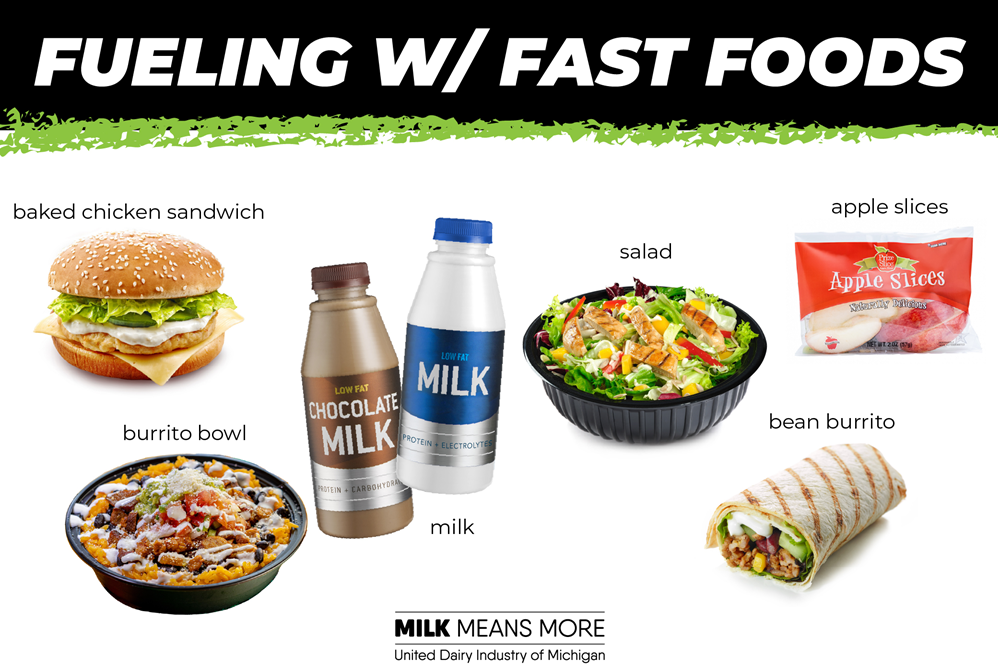
Survey Shows Multi-Sport Participation Holding Steady, Led by Consistent High Achievers
By
Geoff Kimmerly
MHSAA.com senior editor
December 14, 2023
The MHSAA's fifth Multi-Sport Participation Survey, conducted this spring for the 2022-23 school year, showed for the second-consecutive year that 44 percent of athletes at member high schools participated in more than one sport, and with several schools retaining high rankings in their respective Classes for the percentage of their athletes playing multiple sports.
Early and intense sport specialization has become one of the most serious issues related to health and safety at all levels of youth sports, as overuse injuries and burnout among athletes have been tied to chronic injuries and health-related problems later in life.
This past year’s survey showed 44.7 percent of athletes at MHSAA member high schools participating in two or more sports, a slight increase from the 44.3 percent who were multi-sport athletes in 2021-22 – and 1.9 percent higher than the percentage measured with the first survey in 2017-18.
For 2022-23, 47.5 percent of male athletes and 41.2 percent of female athletes played multiple sports. Class D has enjoyed the highest percentage of multi-sport athletes over all five years of surveys, this time at 62.5 percent, followed by Class C (59.0), Class B (49.6) and Class A (36.9).
Similar results for overall sport participation and multi-sport participation relative to enrollment size were seen by further breaking down Class A into schools of fewer than 1,000 students, 1,000-1,500 students, 1,501-2,000 students and more than 2,000 students. For both sport participation as a whole and multi-sport participation specifically, the smallest Class A schools continued to enjoy the highest percentages, while percentages then decreased for every larger size group of schools. This has remained consistent over the last five surveys.
Since 2018-19, the survey also has shown a slight increase in three-sport athletes across all four Classes and overall with 12.6 percent of athletes at MHSAA member high schools playing at least that many in 2022-23.
In early 2016, the MHSAA appointed a Task Force on Multi-Sport Participation as part of a continued effort to promote and protect participant health and address the issues leading to early sport specialization. The annual Multi-Sport Participation Survey was among results of the task force’s work. The 2022-23 Multi-Sport Participation Survey received responses from 85.2 percent of member high schools, a few tenths more than in 2021-22 in setting a survey response record for the second-straight year. (No survey was conducted for 2019-20 as spring sports were canceled due to COVID-19.)
The MHSAA Task Force also recommended measuring multi-sport participation in MHSAA member schools to recognize “achievers” – that is, schools that surpass the norm given their enrollment and other factors that affect school sports participation.
Battle Creek Harper Creek, Detroit Cody and Grand Rapids Northview have appeared among the top 10 percent of their respective Classes four of the five years the survey has been conducted. Several more have appeared among the top 10 percent of their Classes three of the five years: Athens, Decatur, Detroit Douglass, East Grand Rapids, Gibraltar Carlson, Hamtramck, Hillsdale Academy, Holland Calvary, Kinross Maplewood Baptist, Livonia Franklin, Manton, Marquette, New Baltimore Anchor Bay, Ovid-Elsie, Parma Western, Warren Fitzgerald, Warren Lincoln and Warren Michigan Collegiate.
In Class A, Sterling Heights (85.7 percent) and Grand Rapids Union (84.0) posted the highest percentages of multi-sport athletes in 2022-23, with Livonia Franklin (73.1) and Battle Creek Harper Creek (71.3) also reaching 70 percent. In Class B, three schools achieved at least 80 percent multi-sport participation –Warren Michigan Collegiate (85.2), Detroit Cody (84.2) and Battle Creek Pennfield (81.5).
Class C saw eight schools reach 80 percent – Jackson Lumen Christi (92.5), Delton Kellogg (92.3), Decatur (86.2), Muskegon Western Michigan Christian (84.0), Indian River Inland Lakes (83.3), Detroit Crockett Midtown Science & Medicine (82.4), Martin (80.6) and LeRoy Pine River (80.0). Two Class D schools responded at higher than 90 percent multi-sport participation – Coldwater Pansophia Academy with 100 percent for the second-straight year and Carney-Nadeau (94.0) – followed by Brighton Livingston Christian (88.9), Carsonville-Port Sanilac (88.6) and Holland Calvary (87.0).
The full summary report on the Multi-Sport Participation Survey is available on the Multi-Sports Benefits page of MHSAA.com

Coach's Guide to Nutrition: Fueling with Fast Food
October 8, 2024
Life is busy, and sometimes getting food fast is the only option.
Fueling up with fast food can provide the proper nutrition to students when they are in a pinch.
Learning to identify more nutritious foods on restaurant menus will help provide the macronutrients students need in a meal.
Fast food for breakfast, lunch, or dinner can be part of a balanced diet.
Encourage students to keep the macros in mind when choosing from the menu. Giving students tips, such as choosing baked or grilled chicken, fresh fruit or salads, and milk as a beverage can make it easier for athletes to choose foods that will nourish their bodies.
Information above is excerpted from UDIM’s A Coach’s Guide to Nutrition.


